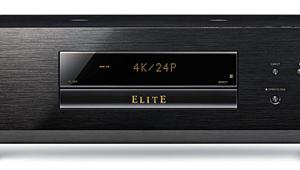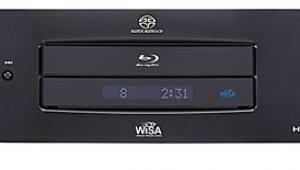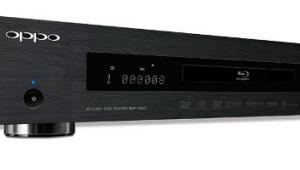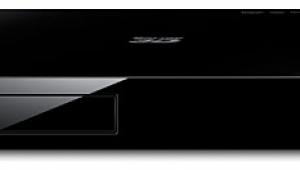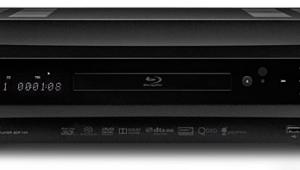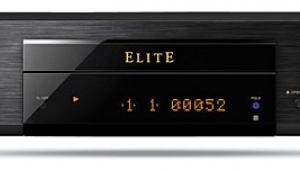Review: Oppo BDP-105 universal disc player
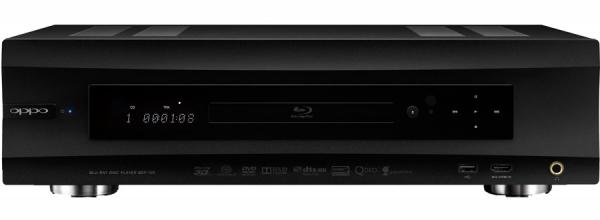
When I reviewed Oppo’s BDP-93 — the company’s first universal player to support Blu-ray 3D and high-rez FLAC audio playback — I wrapped things up by saying it could be the last disc player you’ll ever need. Turns out I spoke too soon, because Oppo keeps finding new ways to make the whole disc-player concept relevant. Its most recent offerings include the BDP-103 ($499) and the BDP-105 under review here, a $1,199 version that has been hot-rodded for two-channel-audio enthusiasts.
The $700 price difference between the two is substantial, so we’ll need to break down the 105’s added features. But let’s first see what they share in common: Blu-ray/Blu-ray 3D/SACD/DVD-Audio playback; Qdeo video processing with 4K video upscaling; dual HDMI 1.4a outputs; 7.1-channel analog output; and dual HDMI inputs (one standard and one MHL version to connect smartphones or tablets).
What does your extra $700 get you on the BDP-105? First up is dual Sabre 32-bit reference digital-to-analog converters (DACs). The player has two separate DAC chips: one for its 7.1-channel output and a second for the dedicated stereo output. Next is a USB Asynchronous DAC input, a feature that enhances computer-sourced playback by enabling the DAC’s internal clock to determine the flow of audio data instead of the USB transmitter in your PC or Mac. There’s also a headphone amplifier (which benefits from direct connection to the ESS Sabre DAC) and balanced XLR stereo analog audio output jacks. Lastly, the player’s audio circuits are driven by a toroidal power supply.
The BDP-105’s advanced audio features also involve a few connections not found on the 103. In addition to the USB Asynchronous DAC input, it has coaxial and optical digital audio inputs. Much in the way that the HDMI inputs let you tap the player’s Qdeo video processing, these let you connect other audio sources to take advantage of its high-performance audio DACs. To sum up, in addition to being a tricked-out Blu-ray player, the BDP-105 can function as a digital A/V switcher and is rigged to provide well-above-average sound quality from its analog outputs. Did Oppo hit the mark? Read on to see.
Setup
Before I discuss ins and outs, I want to first comment on a few of the BDP-105‘s physical characteristics. At 4.8 inches high (and 17 pounds), the BDP-105 is a substantial machine. Its look leans toward the rugged — an effect furthered by the USB/MHL inputs and headphone output jacks dotting the front panel. A set of illuminated touch-sensitive controls are provided, along with a large, logo’d power button that’s easy to locate in dim lighting.
The buttons on Oppo’s excellent remote control are large and backlit, with lettering that’s easy to read. The layout is also cleaner than on the company’s previous remote keypads. New additions include big red Netflix and blue Vudu buttons to jump straight to those services. There’s also an input button that calls up an onscreen menu to toggle through the player’s various input connections. Like other player makers, Oppo also has a control app for Android and iOS devices that represents the remote’s button layout in virtual form.
Since analog audio performance is the reason you’d pay extra bucks for a BDP-105, I made a point of connecting its RCA-jack analog outputs to an Anthem AVM-50 preamp (a model that, conveniently for my purposes here, provides a DSP-bypass analog-input mode). I also made HDMI and coaxial digital out connections from the 105 to the Anthem for comparison purposes. On the input side, I made an HDMI link from my cable box/DVR as part of my evaluation of the 105’s video processing/upscaling capabilities, and also ran a USB cable from my Mac laptop so I could feed it high-rez FLAC files. The 105 comes with a Wi-Fi adapter that you plug into either of the pair of USB 2.0 ports on its back panel. For the most part, I used a Powerline Ethernet connection to link it to my home network, however.
- Log in or register to post comments

